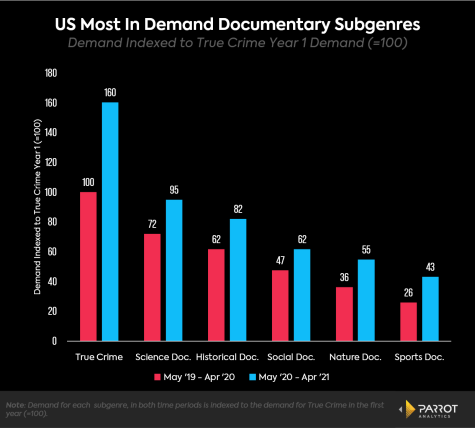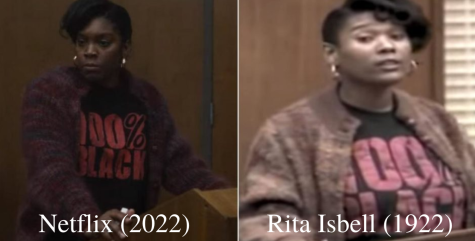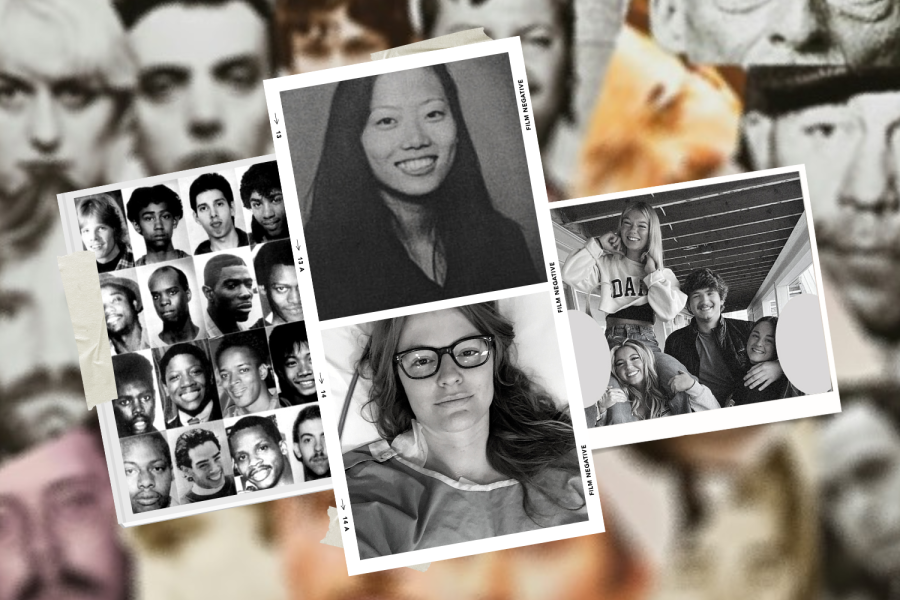The most popular media of 2022 tells a disturbing story about a cultural trend. The popular podcast Crime Junkie continued to top the charts with over 500 million downloads since its release in December 2017, according to crimejunkiepodcast.com. Netflix series DAHMER-Monster: The Jeffrey Dahmer Story, based on the gruesome story of Mr. Jeffrey Dahmer, who murdered 17 people, became the most-watched series on the streaming platform, according to netflix.com. While the murders of four University of Idaho students stumped police and investigators in the fall of 2022, the TikTok community felt differently, as videos flooded the platform in the fall and users accused anyone they could. True crime, a form of narrative that twists actual crimes into entertainment, has seemingly forced its way into everyday media. However, true crime content that normalizes and sensationalizes murder can cause harm to consumers and victims of these real-life crimes.

Many defend the true crime genre because it highlights the atrocities the vulnerable in society face and the shortcomings of the American criminal justice system. Nonetheless, the more this industry constructs its own stories from the deaths of real people, the more desensitized audiences become to violence, turning real-life trauma into a fictional story.
Many note Mr. Truman Capote’s In Cold Blood as one of the first forms of true crime in America, which became further popularized by Serial, a true crime podcast that gained a following in 2014. Fascination only grew as the media and storytelling became more romanticized, according to The New York Times. Now, cable channels, a never-ending stream of documentaries, and podcasts cover every aspect of criminality, and social media allows viewers to contribute.
When Serial became popular, viewers ran to the forum site Reddit to discuss and weigh in on the case featured in that episode, the murder of Ms. Hae Min Lee in 1999, and to argue about the accused, Mr. Adnan Syed’s guilt or innocence. The forum currently has 75,000 members. It is doubtful whether aggressively raising the problematic specifics of earlier occurrences in spaces as such is beneficial. The court overturned Mr. Syed’s conviction partly due to Serial. Other similar podcasts and discussion boards also impacted the legal system, according to wired.com. Additionally, many listeners have had to force themselves to back away from the craze of true crime that Serial and related podcasts due to health issues such as high blood pressure, paranoia, anxiety, and mania.

Following the success of Serial, podcasts became a major aspect of the true crime industry, with hundreds available to listen to on Spotify. Crime Junkie, hosted by Ms. Ashley Flowers and Mr. Brit Prawat, has become a seven-figure business and is often a favorite of true crime fanatics, according to indianapolismonthly.com. In the podcast’s 100th episode, the hosts spend many minutes discussing a theory about the case of Miss Lauren Spierer, a University of Indiana student who was murdered in 2011. Before sharing the unproven story that her friends were involved in the murder with their millions of listeners, Ms. Flowers relays that nothing about her theory has been shown to be true and that this is only local gossip.
When Ms. Flowers commented on her research techniques for producing episodes of Crime Junkie, she clarified that she and Mr. Prawat are not journalists and recoil at the idea that they gain an advantage from a person’s lowest time in life, according to indianapolismonthly.com. Regardless, she is a professional nonfiction storyteller, a subset of the wider category of mass media that also includes journalists. As a result, she has obligations to pursue fairness, accuracy, and, most importantly, the truth. These are simply the fundamental qualities of excellent storytellers; they also place events in perspective, give the voiceless power, and tackle the subject at hand with zeal and empathy.
DAHMER-Monster: The Jeffrey Dahmer Story caused critics to question the need to revisit the tale of a serial murderer who mostly targeted black and brown young men, let alone for the second time in the past five years. To some it seemed no more than a rehash Friend of Dahmer from 2017. Much of the debate has centered on how institutional racism made Mr. Dahmer’s serial murder of these men possible. A few relatives of Mr. Dahmer’s victims have also come out against the show, claiming that it has retraumatized them.
“If I didn’t know any better, I would’ve thought it was me,” Ms. Rita Isbell, the sister of Mr. Errol Lindsey, one of Mr. Dahmer’s victims, said following the series’ release, according to insider.com. “Her hair was like mine, she had on the same clothes. That’s why it felt like reliving it all over again. It brought back all the emotions I was feeling back then. I was never contacted about the show. I feel like Netflix should’ve asked if we mind or how we felt about making it. They didn’t ask me anything. They just did it. But I’m not money hungry, and that’s what this show is about, Netflix trying to get paid.”

Following the murders of four University of Idaho students, Miss Ashley Guillard, a self-proclaimed psychic, posted a series of videos speculating about who murdered the girls on her TikTok account. Using tarot card readings, she concluded that the history department chair of the institution planned the murders. The videos have received 2.5 million views, in which she revealed the professor’s image and claimed that she was the murderer, according to washingtonpost.com. Additional videos from users accused family, friends, and significant others who are mourning the loss of the victims.
Author Ms. Emma Berquist was a victim of a stabbing while walking her dog. She reflected in an essay for Gawker, “True Crime Is Rotting Our Brains,” on the exploitation she experienced following this traumatic event.
“[W]hat happened to me is incredibly rare,” Ms. Berquist said, according to gawker.com. “That didn’t stop multiple tabloid magazines from emailing me after it happened, asking for interviews. When I looked them up I found articles devoted almost exclusively to crimes against white women with titles such as “My Boyfriend Killed and Ate His Secret Lover” and “My Hubby’s Killer was Hiding in the Wardrobe.” The covers are splashy, sensational, the message clear: danger is all around you. This isn’t new, but what used to be contained mainly on supermarket check-out shelves is now everywhere: on our TVs, on our computers, in our ears. “You’re in danger,” says the new Netflix documentary. “Someone could be outside your door right now,” warns the neighborhood surveillance app. “This dead woman thought she was safe,” chirps the cheerful podcast lady.”
Reading crime news can cause exaggerated anxieties about becoming a victim, and for individuals who have experienced violence, the abundance of information can be challenging to handle. In addition, families of the victims express that having audiences revisit the incident traumatized them. It is possible that consumers and producers cannot create or watch true crime media in a wholly moral way. However, true crime stories can make a small contribution to creating a more just and compassionate world if viewers and listeners put the lives of the victims and their families at the center. Rather than obsessing over the killers’ peculiarities, consumers must become more sensitive to victims’ pain than thrilled by murderers’ misdeeds.
Featured Image by Jacqueline Franco ’23





Beatrice • Jul 19, 2024 at 11:47 pm
As a relative who has been victimized by unethical true crime media, this hits home. Content creators really have to be more sensitive to how they involve those who suffered through these crimes when many don’t consent to participate. Many victim families don’t want their stories told for them and don’t want their loved ones to be memorialized for their gruesome deaths.
Claire Moore • Jan 12, 2023 at 10:25 am
Fantastic piece, Jackie! As an avid true crime consumer, I’ve also considered the ethics of mass media crime productions. I found it especially insightful how you highlighted that true crime media has negative effects on both victims and consumers. Great images as well, keep up the good work!